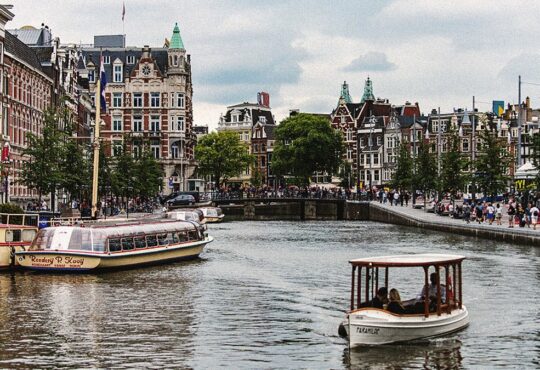If you love traveling and have seen the beauties of this planet, then there’s a good chance that you also care about looking after the world. After all, if climate change goes unchecked, we could lose a lot of unique places. Let’s face it, traveling is hard to do without generating at least some carbon footprint. We can talk about eco-resorts, camping, trekking and so many other things. But as soon as we jump on a plane or drive a car (let alone a 4 wheel-drive type of car), we are emitting greenhouse gases into the atmosphere! A lot of us are already trying to reduce our carbon footprint at home and are looking for options to travel more environmentally, you might be interested in carbon offsetting.
Carbon offsetting isn’t quite as simple as remembering to put your recycling out and it often involves you paying for it, which can get alarm bells sounding all over your brain! When I first heard about ‘carbon offsets schemes’ it kind of sounded like ‘scam’ – phonetically and factually! Luckily, there are serious projects being funded that deserve attention.
So if you’re new to the idea, like I was until not long ago, or just need to know how to go about it, here’s everything you need to know.
What Are Carbon Offsets?
The idea behind carbon offsetting is that you’re balancing the scale. If you do something that generates a large carbon footprint, like flying, then you can do something good for the environment to lessen the impact.
One way to look at a carbon offset is that it’s a tax you pay when you generate carbon. All the revenue from this carbon tax goes towards environmental projects such as tree-planting – trees are excellent at absorbing CO2 and could play an important role in stopping climate change. That being said, carbon offsets for individual travellers are mostly voluntary contributions and are still considered a donation.
However, it’s important to note that carbon offsetting does not reduce the amount of carbon produced. It is just a financial investment in a CO2 reducing project. These projects are usually either forestry plantations or renewable energy projects. In other words, they create carbon sinks or reduce other emission sources.
The Debate On Carbon Offsets
In environmental circles, there is a lot of debate about the benefits of carbon offsetting. Some people believe that carbon offsetting is just a way for people to feel less guilty about doing something bad. If travelers can just pay a little extra, then they might feel it’s okay to fly around the world even more.
On the other hand, carbon offsets do generate a lot of funds to support some beneficial projects. These projects can go on to have a much more significant effect than just offsetting one flight.
If you wanted to do the environmentally-conscious thing, you’d never travel. But, let’s be blunt, since that’s an unrealistic option, carbon offsetting gives you a way to do something positive while still being able to explore the planet that you want to protect.
A good way to think about it is that you should reduce your footprint where you can. If you can’t reduce it, then you can offset it.
How Much Does Carbon Offsetting Cost?
It’s hard to put an exact figure on how much carbon offsetting costs. Everyone calculates the amount of carbon produced a little differently. The projects you put money into will have different levels of efficiency as well. As a rough guide, you can expect to pay between $7.50 – $20 per tonne of CO2.
For example, offsetting a return flight from JFK to San Francisco International costs around $8-$22. New York to London would be between $12-$32.
If you find a project that quotes you a lower price, I’d be wary. It’s hard to do anything effective for less money.
Calculating Your Travel Carbon Footprint
In 2018 travel accounted for 8% of the world’s carbon emissions. This includes the carbon from flights, trains, and buses as well as hotel stays and leisure activities. However, if you were still at home, you’d still be using energy to go about your day. The most significant carbon source from travel is down to flights.
If you want to calculate the amount of carbon your flights will generate, you can use this calculator. It will let you see how much is generated from your journey. It takes into account layovers and which class you fly.
Ways To Offset Your Carbon Footprint
If you want to offset the carbon from your flight, you have two main options. Some airlines will allow you just to tick a box when you buy your tickets. The alternative is to find a project to give your money to directly.
1. Through Your Airline
The big advantage of carbon offsetting through your airline is that it’s easy. Usually, they will also calculate a lower rate than a lot of alternative projects. So in terms of difficulty and cost, this is definitely the easiest option.
However, not all airlines offer this option, although the number increases by the day.
Another issue is that many airlines who offer carbon offset options, aren’t very transparent about how they intend to spend the money either. Since most – possibly all – airlines operate in a highly regulated framework, I sincerely believe that any carbon offset money will end up going to ‘green projects’. However, as a consumer, I would love more details than just reading “we will support carbon reduction projects around the world”.
A good exception to this is Australian carrier Qantas, who clearly states projects they are investing in. There is no doubt that my confidence goes up when I know how my offset funds get spent.
2. Directly To A Project
If you have a little more time to commit, then a more effective use of your funds is to give the money directly to an environmental project. There are a few great ways to do this.
The company that I use is Gold Standard. They have an impeccable reputation, and they allow you to choose which project your funds will go towards. With these guys, you first need to calculate how many tonnes of CO2 you want to offset. For each of their projects, there is a different cost per tonne of offset. This just reflects the fact that some projects are more efficient than others. There are loads of great options to choose from, so you really can’t go wrong.
Other options that have good environmental credentials include Atmosfair, MyClimate, Climate Care, and Terrapass.
What Makes A Good Carbon Offsetting Project?
There are three main questions to ask about any carbon offsetting project. These can help you decide if it’s a worthwhile investment of your money.
Would It Happen Otherwise?
The point of carbon offsetting is to make up for the emissions you’re causing. If you find a project that will happen even without carbon offsetting funds, then you’re not really improving things. The best projects are ones that will only occur as a result of carbon offsetting. That way, the offsetting is making a difference.
Does It Create Any Leakage?
Leakage is a term that describes a project that causes carbon emissions in other places. In other words, it’s no good reducing emissions in one place if it increases emissions somewhere else.
Is It Permanent?
The best projects are ones that create something permanent. These sorts of projects will have a lasting impact. For example, you might want to avoid some forestry projects. While they create a temporary carbon sink, if the trees are cut down or grown in the wrong place, this can ultimately end up releasing more CO2, just at a later date.
My Preferred Projects
For what it’s worth, here’s the type of project I’d go for. Sustainable energy development is at the top of my list. Any projects that are going to install solar panels or wind turbines are long term wins. If I can’t find one of those, I look for projects that make energy production more efficient or cleaner.
I am extra careful with forestry projects. Don’t get me wrong; I love trees. But, there are a lot of pitfalls with forestry projects and caution is a must.
There have been examples where good intentions have resulted in the wrong trees being planted, so they don’t thrive. Sometimes the forests that are grown under these schemes are later cut down. Finally, there are examples of ‘wasteland’ sites being used this way only for it to turn out that the land was a more efficient carbon sink without the trees.
In other words, it can be hard to know if you’re picking a good one or not, so I tend to put my money in renewable energy. Nevertheless, I would be happy to be presented with good forestry projects.
Simple Ways To Reduce Your Carbon Footprint While Travelling
If you’re not sold on carbon offsets as the way forward, there are other things you can do instead, or as well if you wish. Here are a few simple things you can do that will reduce your carbon footprint while you’re traveling.
1. Choose Direct Flights
Takeoff and landing are the times at which significantly more carbon dioxide is produced and released. This means that flying direct routes will have a lower impact than if you travel the same distance but take a layover.
2. Choose More Efficient Airlines
Not all air travel is equally polluting. Some carriers have a much better record at reducing their emissions and running more efficient flights. When choosing a less damaging airline, Easy Jet, Alaska Air, Qantas, and United are the top choices.
3. Forego A Little Luxury!
If you’re fortunate enough to have the luxury of choosing to fly first or business class, then you do have an option. Flying economy is the lower carbon option. Because of the increased seat size, flying first class can use 3-4x more carbon than flying economy.
4. Pack Lighter
The more weight that’s on a plane, the more fuel it uses. So, by bringing a lighter suitcase, you’re not only avoiding the extra luggage fees, but you’re also making your trip a little more environmentally friendly.
5. Ditch Short-Haul Flights
Any flights that travel fewer than 350 miles are absolutely terrible for the environment. If you can, trade your short-haul flight for a train ride. Trains are one of the best options for low carbon travel. Sailing is also an excellent way to travel sustainably using the wind as your main source of energy!
Final thoughts
While investing your money in carbon offset projects does not reduce the impact left by your footprint, there are important environmental projects funded by such offsetting schemes. I can’t think of a better investment than the ones having a positive impact on our planet.
Written by Silvia, the environmentally-conscious mom behind the blog Enviromom. She is a busy mom to three kids and an avid indoor plant collector.





